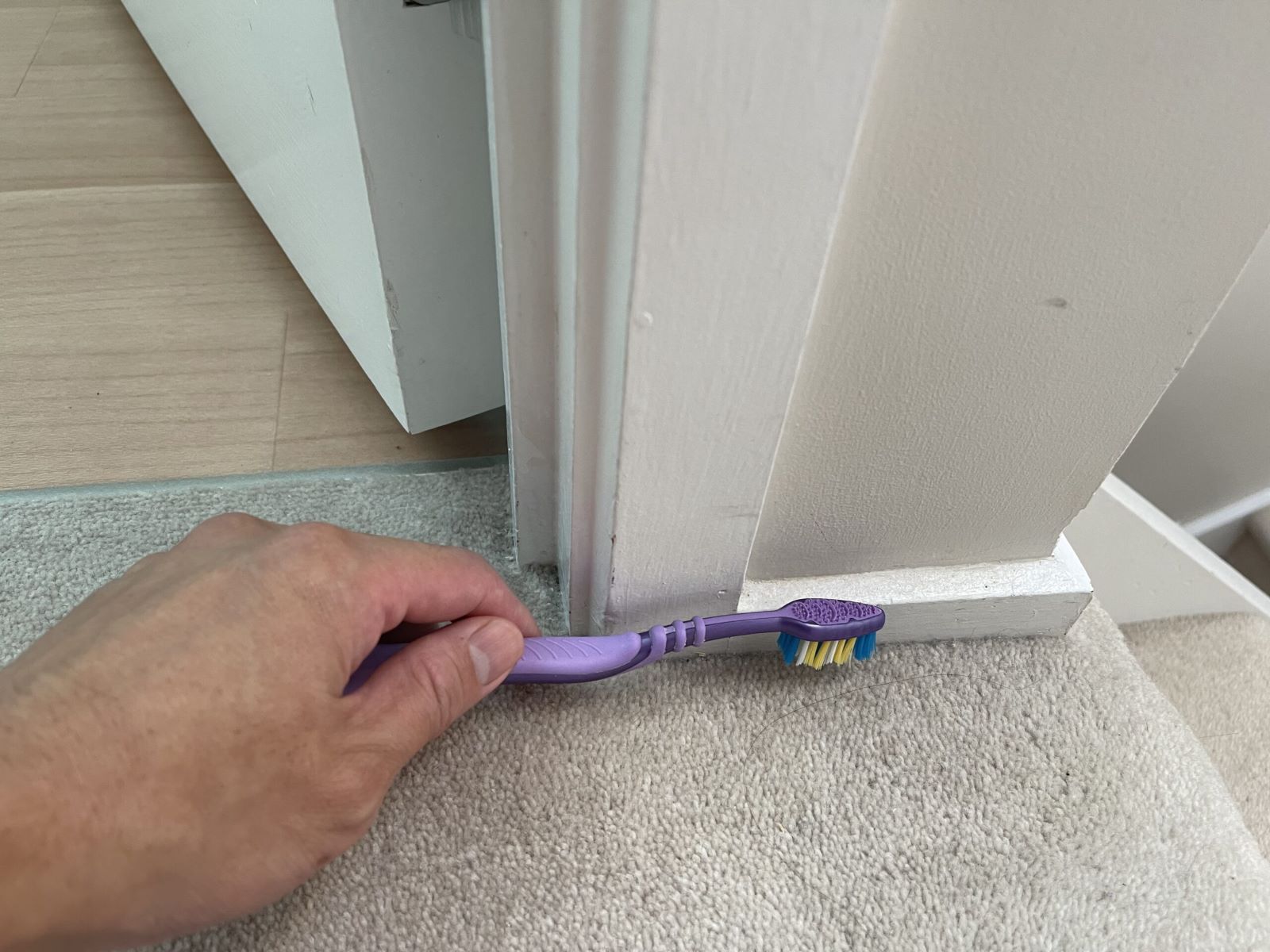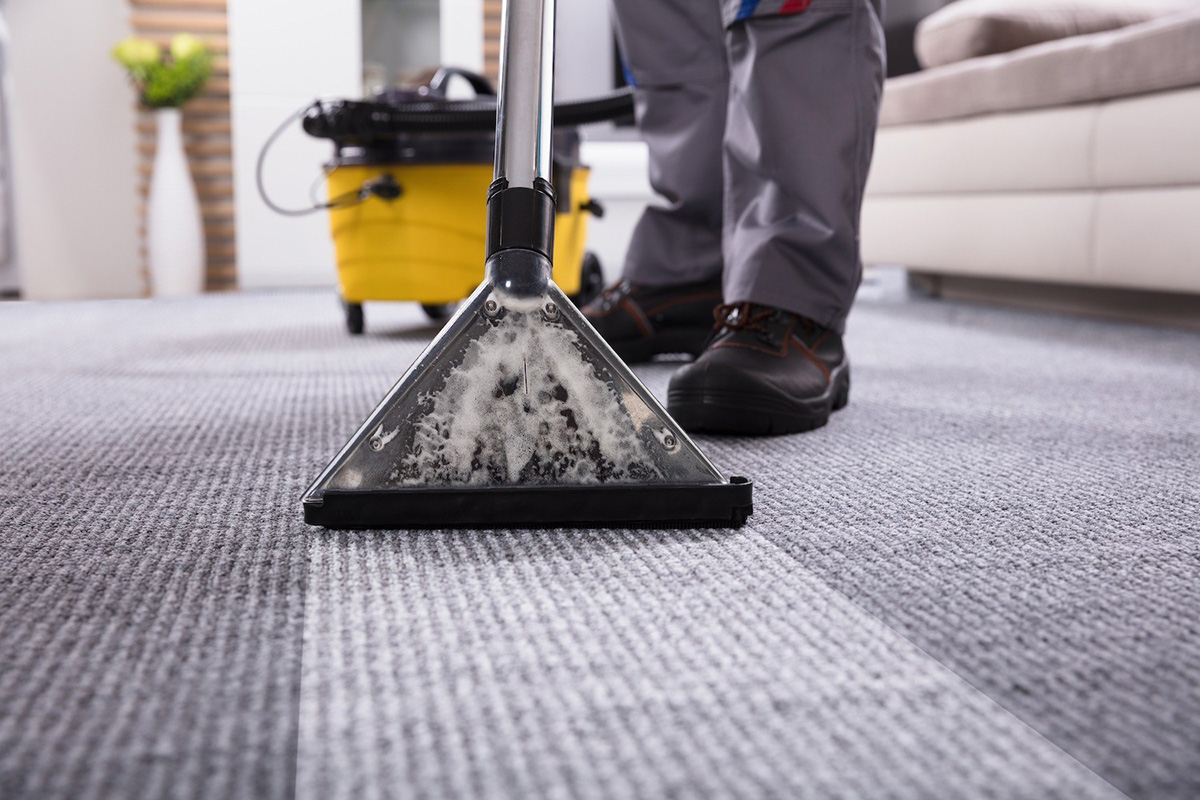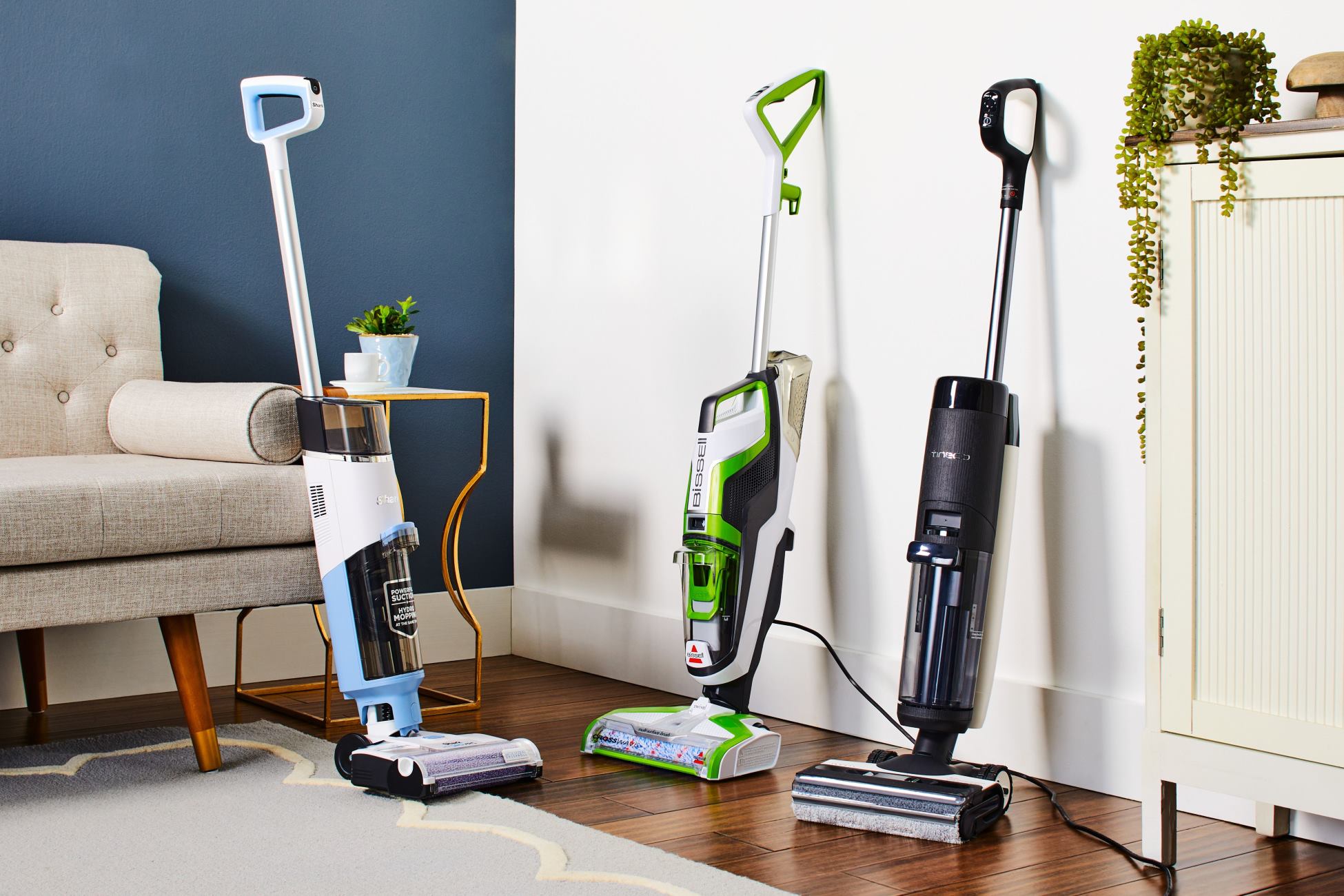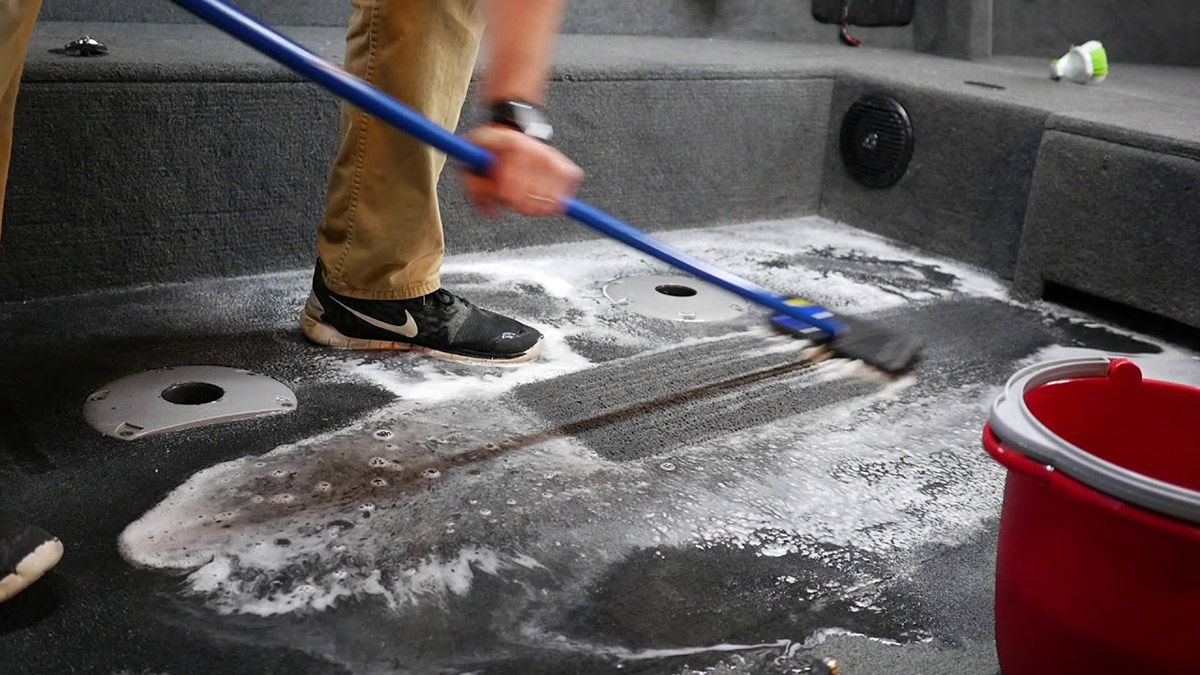

Articles
How To Clean A Carpet With Hydrogen Peroxide
Modified: September 1, 2024
Learn how to clean your carpet using hydrogen peroxide with these helpful articles. Discover the best techniques and tips for a spotless carpet.
(Many of the links in this article redirect to a specific reviewed product. Your purchase of these products through affiliate links helps to generate commission for Storables.com, at no extra cost. Learn more)
Introduction
Having clean carpets is not only visually appealing but also essential for maintaining a healthy living environment. Carpets can trap dirt, dust, allergens, and even stains over time, leading to a dull and unattractive appearance. While there are numerous carpet cleaning methods available, one effective and affordable solution is using hydrogen peroxide.
Hydrogen peroxide is a common household item known for its powerful cleaning properties. Not only is it readily available and inexpensive, but it is also a safe and eco-friendly alternative to harsh chemical cleaners. In this article, we will explore the benefits of cleaning carpets with hydrogen peroxide and provide a step-by-step guide on how to clean your carpets effectively.
Before we dive into the process, it’s important to note that hydrogen peroxide is suitable for most types of carpets, including synthetic and wool carpets. However, it’s always a good idea to perform a spot test on a small, inconspicuous area of your carpet to ensure compatibility.
Now, let’s delve into the benefits and precautions of using hydrogen peroxide for carpet cleaning.
Key Takeaways:
- Hydrogen peroxide offers an effective, affordable, and eco-friendly solution for carpet cleaning, with benefits including stain removal, antibacterial properties, and safety for pets and children.
- When using hydrogen peroxide to clean carpets, it’s crucial to perform a spot test, dilute the solution if necessary, avoid excessive moisture, and follow specific steps for tackling different types of stains.
Benefits of Cleaning with Hydrogen Peroxide
When it comes to carpet cleaning, hydrogen peroxide offers a range of advantages. Let’s explore some of the key benefits:
- Effective Stain Removal: Hydrogen peroxide is known for its excellent stain-removing properties. It can effectively break down and remove common carpet stains such as coffee spills, wine stains, pet accidents, and food stains. Its active oxygen molecules penetrate deep into the carpet fibers, lifting away stubborn stains.
- Antibacterial and Antifungal Properties: One of the significant advantages of hydrogen peroxide is its ability to kill bacteria and fungi. This makes it an excellent choice for eliminating odors caused by bacteria growth, such as pet urine or musty smells. It helps to freshen up your carpets, leaving them smelling clean and hygienic.
- Safe for Pets and Children: Unlike many chemical cleaners, hydrogen peroxide is safe for use around pets and children. It is non-toxic and does not leave behind any harmful residues, making it a suitable option for households with pets or young children.
- Environmentally Friendly: Hydrogen peroxide is an eco-friendly cleaning solution. It naturally breaks down into water and oxygen, making it a greener alternative to harsh chemical cleaners. By choosing hydrogen peroxide for carpet cleaning, you are reducing your environmental impact.
- Cost-effective: Another advantage of using hydrogen peroxide is its affordability. Compared to commercial carpet cleaning products, hydrogen peroxide is a budget-friendly option that can deliver impressive results.
With these benefits in mind, let’s move on to some precautions to consider before using hydrogen peroxide on your carpets.
Precautions before Using Hydrogen Peroxide
While hydrogen peroxide is generally safe to use, there are a few precautions to keep in mind before using it on your carpets:
- Spot Test: Before applying hydrogen peroxide to your entire carpet, it is crucial to perform a spot test. Choose a small, inconspicuous area and apply a small amount of hydrogen peroxide. Wait for a few minutes and check for any color fading or carpet damage. If there are no negative reactions, you can proceed with cleaning the rest of the carpet.
- Proper Dilution: Hydrogen peroxide is available in different concentrations, and it is essential to dilute it correctly. Most commercial hydrogen peroxide solutions are already diluted, but it’s a good idea to read the label and follow the instructions. If you are using a higher concentration solution, dilute it with water in a 1:1 ratio before use.
- Avoid Excessive Moisture: While hydrogen peroxide is relatively safe for carpets, excessive moisture can cause damage. Avoid saturating the carpet with the solution and use a damp cloth or sponge when applying it. After cleaning, make sure to thoroughly dry the carpet to prevent mold or mildew growth.
- Colorfastness: Some carpets may be sensitive to hydrogen peroxide and can experience color fading or bleaching. It is advisable to check the carpet manufacturer’s recommendations or consult a professional cleaner if you are unsure about using hydrogen peroxide on your specific carpet.
- Protective Measures: When using hydrogen peroxide, it is a good idea to wear gloves and eye protection to avoid any contact with the skin or eyes. Additionally, ensure proper ventilation in the cleaning area to prevent the inhalation of fumes.
By following these precautions, you can safely and effectively clean your carpets with hydrogen peroxide. In the next section, we will discuss the supplies needed for the cleaning process.
Supplies Needed for Cleaning
Before you start cleaning your carpets with hydrogen peroxide, gather the following supplies:
- Hydrogen Peroxide: Choose a hydrogen peroxide solution of 3% concentration, which is commonly available in most drugstores or supermarkets. Ensure that the hydrogen peroxide is fresh and has not expired.
- Water: You will need water to dilute the hydrogen peroxide if required and for rinsing the carpet after cleaning.
- Spray Bottle: A spray bottle will make it easier to apply the hydrogen peroxide solution evenly onto the carpet fibers.
- White Cloth or Sponge: Use a white cloth or sponge to gently blot and clean the carpet. Avoid using colored cloths as they may transfer dye onto the carpet.
- Vacuum Cleaner: Before you begin the cleaning process, ensure that you have vacuumed the carpet thoroughly to remove any loose dirt or debris.
- Clean Towels: Keep a stack of clean towels nearby to blot excess moisture from the carpet during and after cleaning.
- Fans or Good Ventilation: To aid in the drying process, it is helpful to have fans or good ventilation in the room where the carpet is being cleaned. This will ensure proper airflow and prevent mold or mildew growth.
- Protective Gloves and Eye Protection: Consider wearing protective gloves and eye protection to avoid any potential skin or eye irritation from the hydrogen peroxide solution.
Having these supplies ready will make the carpet cleaning process smoother and more efficient. In the next section, we will walk through the steps to clean your carpet with hydrogen peroxide.
Test a small, hidden area of the carpet with hydrogen peroxide to ensure it doesn’t cause any discoloration. If it’s safe, mix 1 part hydrogen peroxide with 5 parts water and use a spray bottle to apply to the stained area. Blot with a clean cloth and repeat as needed.
Steps to Clean a Carpet with Hydrogen Peroxide
Follow these step-by-step instructions to effectively clean your carpet with hydrogen peroxide:
- Vacuum the Carpet: Start by thoroughly vacuuming the carpet to remove any loose dirt, dust, and debris. This step will ensure that the hydrogen peroxide can penetrate deep into the carpet fibers.
- Prepare the Hydrogen Peroxide Solution: If your hydrogen peroxide solution is higher than 3% concentration, dilute it with an equal amount of water. Pour the solution into a spray bottle for easy application.
- Spot Test: Perform a spot test on a small, inconspicuous area of the carpet. Apply a small amount of the hydrogen peroxide solution and wait for a few minutes to check for any adverse reactions such as color fading or carpet damage. If there are no negative effects, you can proceed to the next step.
- Apply the Solution: Spray the hydrogen peroxide solution onto the stained or dirty areas of the carpet. Make sure to apply an even layer but avoid saturating the carpet with excessive moisture. Gently work the solution into the carpet fibers using a clean cloth or sponge.
- Blot and Repeat: After applying the solution, use a white cloth or sponge to blot the stained or dirty areas. Blotting helps to lift away the dirt, stains, and excess moisture from the carpet. If necessary, repeat the process until the stains are removed or significantly reduced.
- Rinse the Carpet: Once you have cleaned the stained areas, rinse the carpet with clean water to remove any remaining solution. You can either use a spray bottle filled with water or a clean damp cloth to rinse the carpet. Blot the rinsed areas with a clean towel to remove excess moisture.
- Dry the Carpet: Allow the carpet to dry completely before walking on it or placing any furniture back on it. You can help speed up the drying process by using fans or ensuring good ventilation in the room. Avoid excessive moisture as it can lead to mold or mildew growth.
- Vacuum Again: Once the carpet is dry, vacuum it again to fluff up the carpet fibers and remove any remaining dirt or debris that may have been loosened during the cleaning process.
Following these steps will ensure that your carpet is thoroughly cleaned and freshened up using hydrogen peroxide. Next, we will discuss how to tackle specific stains with hydrogen peroxide.
Removing Stains with Hydrogen Peroxide
Hydrogen peroxide is highly effective in removing various types of stains from carpets. Here’s how you can tackle specific stains using hydrogen peroxide:
- Coffee or Tea Stains: Blot up the excess liquid with a clean cloth. Mix equal parts hydrogen peroxide and water, then apply the solution to the stain. Gently blot the area until the stain is lifted. Rinse with water and blot dry.
- Red Wine Stains: Blot the stain to remove any excess wine and sprinkle salt over the affected area. Mix equal parts hydrogen peroxide and dish soap, then pour the solution onto the stain. Gently work it into the carpet fibers and let it sit for a few minutes. Blot the area with a clean cloth until the stain is gone. Rinse with water and blot dry.
- Pet Stains: Blot up any liquid from the stain using a clean cloth. Mix equal parts hydrogen peroxide and water, then pour the solution onto the stain. Let the solution sit for a few minutes to break down the odor-causing compounds. Blot the area until the stain is removed. For stubborn stains or odors, you may need to repeat the process. Rinse with water and blot dry.
- Food Stains: Scrape off any solid food particles with a spoon or a blunt knife. Mix equal parts hydrogen peroxide and water, then apply the solution to the stain. Gently blot the area until the stain is lifted. Rinse with water and blot dry.
- Blood Stains: Blot up the excess blood with a clean cloth. Mix equal parts hydrogen peroxide and cold water, then apply the solution to the stain. Blot the area until the stain is lifted. Rinse with water and blot dry. If the stain is stubborn, you can also try applying hydrogen peroxide directly to the stain and allowing it to fizz before blotting it up.
Remember to spot test each cleaning solution on a small, inconspicuous area of the carpet before applying it to the stain. Different carpets may react differently to hydrogen peroxide, so it’s important to ensure compatibility.
Now that you know how to remove specific stains, let’s move on to some additional tips for effective carpet cleaning with hydrogen peroxide.
Tips for Effective Carpet Cleaning
To ensure that you achieve the best results when cleaning your carpets with hydrogen peroxide, consider the following tips:
- Act Quickly: It’s best to tackle stains as soon as they happen. The longer a stain sits on the carpet, the harder it can be to remove. Prompt action can prevent the stain from setting and becoming more difficult to clean.
- Blot, Don’t Rub: When dealing with stains, always remember to blot the affected area instead of rubbing it. Rubbing the stain can push the stain deeper into the carpet fibers and potentially damage the carpet. Blotting gently with a clean cloth or sponge helps to lift the stain without spreading it.
- Start From the Outer Edge: When cleaning a stain, begin by working from the outer edge towards the center. This helps prevent the stain from spreading. Gradually work your way towards the center while blotting with a clean cloth or sponge.
- Use a White Cloth: When blotting stains or applying cleaning solutions, use a white cloth or sponge. Colored cloths may transfer dyes onto the carpet, causing further staining or discoloration. A white cloth allows you to monitor the progress of stain removal more accurately.
- Patience is Key: It’s essential to be patient when cleaning stains with hydrogen peroxide. Some stains may require multiple treatments or additional soaking time. Allow the hydrogen peroxide solution to work on the stain, and don’t expect instant results. Be persistent and continue blotting until the stain is completely removed.
- Dry Thoroughly: After cleaning the carpet with hydrogen peroxide, ensure it is completely dry before using the area or replacing furniture. Excess moisture can lead to mold or mildew growth. Use fans or open windows to facilitate airflow and quick drying. You can also place clean towels over the damp areas to absorb moisture.
- Consider Professional Cleaning: If you are dealing with extensive stains, heavily soiled carpets, or if you’re unsure how to proceed, it may be best to consult professional carpet cleaners. They have the expertise and specialized equipment to deep clean and restore your carpets effectively.
By following these tips, you can maximize the effectiveness of hydrogen peroxide for cleaning your carpets. Now, let’s wrap up what we’ve discussed.
Conclusion
Cleaning your carpets with hydrogen peroxide offers a range of benefits, including effective stain removal, antibacterial properties, and a safe and eco-friendly cleaning solution. By following a few precautions and using the right supplies, you can successfully clean your carpets and restore their appearance.
Remember to always perform a spot test before applying hydrogen peroxide to your entire carpet, and dilute the solution if necessary. Avoid excessive moisture and take the necessary safety measures when handling hydrogen peroxide.
When cleaning specific stains, such as coffee, red wine, pet accidents, food stains, or blood, follow the appropriate cleaning process using hydrogen peroxide. Blot the stains gently and rinse the carpet with water after cleaning to remove any residue.
To enhance the effectiveness of your carpet cleaning, consider the additional tips provided. Act quickly, blot stains instead of rubbing them, and work from the outer edge of the stain towards the center. Use a white cloth for better visibility and be patient during the cleaning process.
After cleaning, make sure to dry the carpet thoroughly to prevent any moisture-related issues. In case of extensive stains or heavily soiled carpets, it’s always a good idea to seek professional carpet cleaning services for optimal results.
By incorporating hydrogen peroxide into your carpet cleaning routine and following these guidelines, you can enjoy clean and fresh carpets while ensuring a healthier living environment for you and your family.
So go ahead, grab your hydrogen peroxide solution, and give your carpets the deep cleaning they deserve!
Frequently Asked Questions about How To Clean A Carpet With Hydrogen Peroxide
Was this page helpful?
At Storables.com, we guarantee accurate and reliable information. Our content, validated by Expert Board Contributors, is crafted following stringent Editorial Policies. We're committed to providing you with well-researched, expert-backed insights for all your informational needs.














